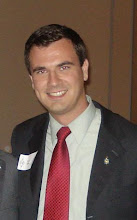 Melville, and Whitman are excellent examples of man’s need for some degree of solitude. In spending time isolated, or wrapped up in nature and divorced from human influence, man was able to find the divine.
Melville, and Whitman are excellent examples of man’s need for some degree of solitude. In spending time isolated, or wrapped up in nature and divorced from human influence, man was able to find the divine.How many times in your day are you alone? If you live in a city or metropolitan area, that doesn’t help. Cell phones, e-mail, text messages, twitter, YouTube, and Facebook create a world in which even when we are physically alone, we are still communicating with others in a fairly direct fashion. “A constant stream of mediated contact, virtual, notional, or simulated, keeps us wired in to the electronic hive…” Without solitude, we are becoming Star Trek’s Borg Collective.
Although the happenings of the 20th century are probably what got us into this crisis of solitude, there are several musical pieces from this era that contemplate this need for isolation. I immediately think of 4’33” (said as “Four Thirty Three” or “Four Minutes and Thirty Three Seconds”) by the experimental composer John Cage. In the piece, a pianist, backed up by an orchestra, plays a rest for four minutes and
 thirty three seconds. No notes are heard. As per John Cage’s instructions, the instrumentation, as well as the duration of the rest can be changed. Although the piece is frequently the butt of musicology jokes, there is something to it. Cage is forcing you to hear silence, which does not happen too much in our society. In hearing this silence, you are meant to contemplate the greater nature of music, art, and life. (Cage was a truly unique composer, some of his music can be seen at the left - yes, that's the sheet music). Charles Ives’ The Unanswered Question, performed by the BSO a few weeks ago as the opener to their Organ Symphony program, is a piece in a similar vein. There is very little to the piece; flutes, strings, and a few trumpets playing mostly sustained notes create dissonance, a sense of timelessness, and a slightly ominious mood. As the title of the piece would suggest, it begged several question about music, sound, and art, of which there is no answer. You must contemplate, in solitude, these questions for yourself.
thirty three seconds. No notes are heard. As per John Cage’s instructions, the instrumentation, as well as the duration of the rest can be changed. Although the piece is frequently the butt of musicology jokes, there is something to it. Cage is forcing you to hear silence, which does not happen too much in our society. In hearing this silence, you are meant to contemplate the greater nature of music, art, and life. (Cage was a truly unique composer, some of his music can be seen at the left - yes, that's the sheet music). Charles Ives’ The Unanswered Question, performed by the BSO a few weeks ago as the opener to their Organ Symphony program, is a piece in a similar vein. There is very little to the piece; flutes, strings, and a few trumpets playing mostly sustained notes create dissonance, a sense of timelessness, and a slightly ominious mood. As the title of the piece would suggest, it begged several question about music, sound, and art, of which there is no answer. You must contemplate, in solitude, these questions for yourself.When I think of the times in the day that I am truly alone, I cannot think of many. An exception to this incessant stream of signals, I believe, can be found in music. Although the aforementioned pieces are especially appropriate examples, the very nature of all art and music has a certain built-in quality of meditative solitude – you must enjoy this art by your own standards, by yourself. Ironically, when I am listening to classically performed pieces, live or on a recording, I find my mind drifting more freely than it does on almost any other occasion. Even though there are hundreds of others in the room, and you are listening to a signal created by not just one, but dozens of other humans, it is very possible to feel alone. Although it might not correspond directly to Deresiewicz’ idea of solitude, I think this feeling of isolation you may achieve when you are wrapped up in a piece of music is close to what is he is getting at. It is a temporary release from the electronic hive.


No comments:
Post a Comment